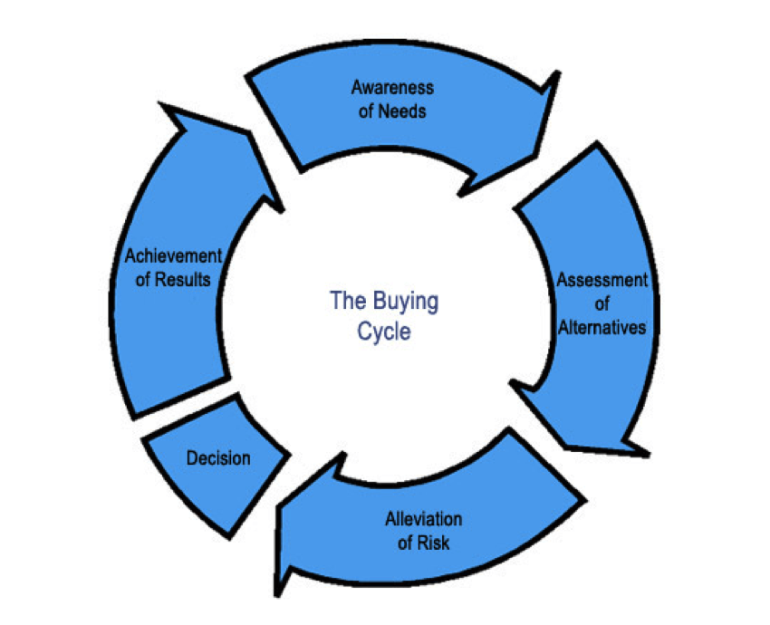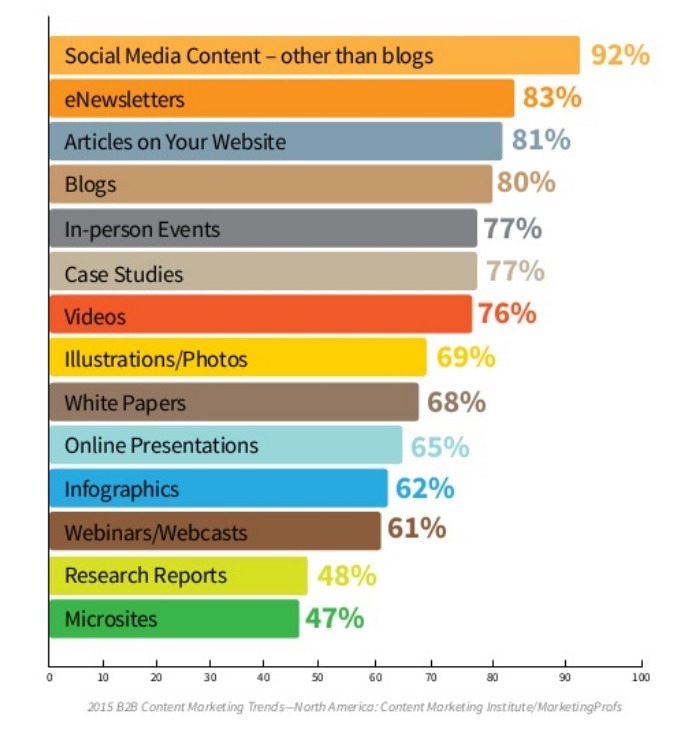
title="Buying Cycle & Customer Acquisition
In a dream world, once you cut the ribbon on a new website, traffic will come pouring in, gracefully flow through your pages, collect all the information it needs to make a buying decision, close the deal, and return for more in the future. However, the process is rarely that simple; in fact, improving the buying cycle, increasing traffic, and acquiring new customers takes a lot of research and refining.

Image: Kissmetrics
Optimizing these systems is a balance of getting users on your e-commerce page, having them stick around through checkout, and having the tools in place to understand how these areas work. The sales funnel involves: acquisition; activation; retention; revenue; and referral, and any one (or more) of these steps may be the leak in your marketing pipeline. Do you know which of these areas could be keeping your sales from increasing?
Generating Traffic - And Directing It
The first step to greater sales is getting customers in the door. This means generating awareness of your business and interest in your products or services.
Generating Awareness
Brand awareness can come from virtually anywhere. Search engine results, physical and electronic promotions, and word of mouth advertising are popular, dependable ways to increase traffic on a site.
There's plenty you can do to optimize SEO before launching a website, such as creating relevant product descriptions, using Geo-specific keywords for related services, and eradicating broken links and comparable loading errors. Some enterprises find success with PPC advertising - but if you employ this technique, you must take your clients to relevant landing pages so they don't immediately leave. Word of mouth advertising, however, tends to come naturally if consumers have a positive experience.
Building (And Holding) Interest
Focus on the "why" of your business, and promote the value of your offerings through the site's content. This means knowing your shopper's pain points and motivations at every stage the buying cycle, as well as how your solutions are the best possible answer on the market.
- Pain points. Why are your shoppers typing your keywords into search engines? Be as specific with these answers as possible. For example, consumers looking for a local restaurant aren't just hungry. They may be looking for atmosphere, live music, or a number of other specifics. Look at the buying process, and figure out what the customer needs from his or her point of view. Once you have those concerns in mind, figure out exactly how your company is better than any other solution users can find.
- Motivating your shoppers. The pain points you find are the basis for motivating customers. Next, highlight how your solutions will give clients what they want. With this information in mind, shoppers will continue down the sales funnel.
Figuring out what your ideal customers need and why you're the answer to their problems is an excellent start. Now that you've got their interest, connect them with the information or services they expect to find.
Directing Your New Traffic
Increasing traffic is a start - but what do you do with those clicks once they land on your site? The trick is to get clients on the pages they're looking for as soon as possible and to eliminate or bypass any information they don't need for them.
Those restaurants in the "pain points" example, for instance, may find their customers value fresh, locally farmed products. If you're working with a keyword like "locally farmed restaurants in City, ST," make sure the landing page clicks through to a relevant menu or specific statement about those offerings. Don't expect readers to surf around looking for this information if the keyword has led them to believe they'd find it immediately.
In the same way, if you're an online retailer, make sure checkout information is readily available and lucid whenever a shopper is ready to buy. You can also grease the wheels of the buying process by optimizing your shopping cart, clearly outlining different purchasing options and making the process easier for return customers. This is an essential step in converting customers, keeping them coming back, and getting them to spread the word about your service.
Converting - And Retaining
All your marketing and design dollars are wasted if you can't close a sale. If you've pulled users this far along, seal the deal by highlighting the benefits of your product and making things as simple as possible. For example, a checkout process that goes through more than two or three pages is likely to result in an abandoned cart. Social logins through Facebook or Twitter accounts can streamline account creation, greatly diminishing the user's time to convert. Offering PayPal purchases means users won't have to get up to find their credit cards. These kinds of solutions keep users glued to your product and how it'll shortly be improving their lives.
At the end of the sale, you've still got work to do. Depending on the convenience of your service and the quality of the experience, users will return when they need it again, and they'll recommend it if someone they know has a similar need. Optimize on this chance to retain e-commerce customers and generate new ones by following up after the purchase. This can be a simple confirmation or short survey to see how the experience was.
This gives shoppers a good impression and the confidence to stop by your site again in the future, but it also sets you up with a very important step in acquiring new business: word of mouth advertising. This is an excellent opportunity to engage on social media, as well. Likes and shares can be incentivized with discounts.
However, even if sales are closing and new customers are logging on every day, a marketer's job is never over. Tracking and improving are essential parts of cultivating the buying cycle and continually acquiring fresh leads.
Tracking - And Improving

Image: By Content Marketing Institute/MarketingProfs
For many businesses looking to rollout a new product or publish a website, this is where it starts: user experience (UX) research and analytics. But it's also an ongoing process for any enterprise. A/B testing, surveys, and data collection can optimize your website for consumers, and give you a few ways to know where clients are coming from and where they may be getting lost.
It's essential to the continuing success of a business to constantly analyze the buying cycle and make improvements where needed. Here are two recommendations for assessing the quality of your sales funnel and knowing what needs tweaked:
- UX testing and analysis. Are customers getting lost on your site or having trouble completing tasks (like checking out)? UX research lets you gather feedback from users by asking them questions or observing how they use your services. Information can be collected through interviews, surveys, or tests.
- Analytics. Google Analytics and comparable tools let you measure the success of keywords, landing pages, and other metrics that affect your SEO and conversion rates. They can tell you where clients are coming from, such as a Twitter account or Google search, and they can point out which pages customers are on when they decide to leave your site.
Using this information, entrepreneurs can work their way back through the pipeline and optimize whatever needs optimizing. Knowing how you can improve is the only way to work on the sales funnel and generate leads with any degree of intention. By working and reworking through these steps, a business can focus on the bigger picture: keep traffic flowing, guide users through its pages, deliver relevant information, close the deal - and keep shoppers coming back for more.
Hand-Picked Related Articles:
* Lead image adapted from BouncedPhoton
